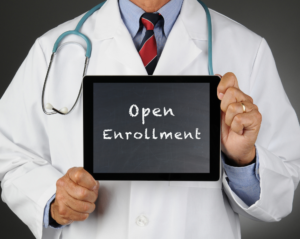
by admin | Oct 5, 2022 | Health Insurance, Open Enrollment
 For most employers, employee benefits represent a significant portion of their overall budget and a critical part of their employee recruitment and retention strategy. Benefits vary from employer to employer but can range from medical or dental insurance to flexible spending accounts, life and disability insurance, and more. The annual process of renewing those benefits involves a great deal of work, most of which is unseen by employees.
For most employers, employee benefits represent a significant portion of their overall budget and a critical part of their employee recruitment and retention strategy. Benefits vary from employer to employer but can range from medical or dental insurance to flexible spending accounts, life and disability insurance, and more. The annual process of renewing those benefits involves a great deal of work, most of which is unseen by employees.
As you finalize your benefits lineup for the next year and hold your first open enrollment meeting, we’re sharing five tips related to common issues we hear from Mineral customers each year.
There are different ways to handle benefit elections. They range from affirmative or “active” elections that require everyone to select options, to evergreen “rolling” elections that only require employees to take action if they want to make changes. There are also many other options in between. Which option an employer chooses depends on their strategy for participation, the types of benefits they offer, state wage deduction rules, and other factors. Before you get started with benefits elections:
- Double check to confirm that any election rules you are using during open enrollment match what was discussed with your insurance carrier or third-party administrator (TPA), as well as matching what you say to employees in plan materials and open enrollment communications.
- Decide what happens if an employee who is enrolled in coverage takes no action during open enrollment. Will their coverage be dropped? Will some or all of their elections carry over to the next plan year? Clearly communicate the consequences of inaction, if any.
Don’t Forget About COBRA!
Federal COBRA applies to most employers that offer group health coverage and that have 20 or more employees. COBRA allows employees (and certain dependents) who experience qualifying events during the plan year to continue coverage for a period of time, at their own cost. Many states have similar laws for employers with fewer than 20 employees, often called “mini-COBRA” laws. Individuals who have elected federal COBRA have many of the same rights as active participants and must be provided the option to waive or elect coverage or add or remove dependents as well. To notify employees of their COBRA rights:
- Clarify who is responsible for sending open enrollment information to COBRA qualified beneficiaries. If you administer COBRA in-house, ensure the person responsible knows open enrollment communications should include COBRA qualified beneficiaries.
- If you are using a third-party vendor for COBRA administration, make sure they send any required communications or paperwork to eligible employees. If the vendor doesn’t do this, the responsibility generally falls on the plan sponsor (the employer).
Leverage Attention
The open enrollment period happens when employees are paying closer attention to benefit-related topics. Open enrollment meetings and communications can present additional opportunities to gather data and insight into the needs and experiences of participants in your benefit programs. Use this time to:
- Consider including an employee survey or otherwise collecting feedback, even anecdotally, on areas of interest or concern. This might include asking for feedback on the open enrollment process and communications. If you hear grumbling about a specific process or hear people express confusion about a particular option, that can be a great way to identify opportunities for education or change. For example, if several people mention in an open enrollment meeting that drug prices are too high, you might decide to send a follow-up communication to remind employees about bulk mail order prescriptions and the additional value that can provide.
- Consider a dependent audit. Dependent audits ensure only eligible individuals are on the plan, which keeps employers in compliance with their plans as written and reduces any unnecessary costs for ineligible dependents. Timing an audit to occur just before or during open enrollment can reduce compliance complications if a dependent is deemed ineligible.
Carefully Review Salary Deduction Agreements
Benefit costs typically change from year to year and most state wage and hour laws require employees to authorize payroll deductions for benefit contributions. Use this time to review your existing deduction agreements and ensure they cover the most current options. Then gather updated deduction agreements from employees. As you review these agreements, consider the following questions:
- Do they clearly indicate the approved amounts to be deducted from pay and the frequency?
- What rights do employees have to choose whether or not their cost share is taken pre-tax or after-tax? If you have a § 125 cafeteria plan in place, confirm the options available so your deduction agreements accurately reflect the choices available to employees.
- Do they address deductions from final pay (e.g., double deductions)? Caution: Cafeteria plan rules do not allow for double deductions from final pay in most cases, and state wage and hour laws can heavily restrict this as well.
Align Processes
Carefully review your electronic or online benefits enrollment systems to confirm the options and language align with the plan rules, and consider the following:
- If you use a universal enrollment form or electronic system, confirm they contain any insurance carrier or TPA required arbitration or enrollment language, so the election is considered valid.
- Put an audit process in place so that, after open enrollment, you can confirm the elections made by employees are transmitted to the carrier/TPA accurately and payroll entries are aligned.
- Provide employees with a confirmation statement that outlines their final election choices and deduction agreements. Also, consider reminding employees to confirm this statement against their first payroll of the new plan year to make sure it reflects their choices. Both steps can go a long way to catching mistakes early, when they are easiest to compliantly correct.
Planning ahead can result in a more effective, streamlined process for the employer and clarity for employees.
By Eeloria Brown
Originally posted on Mineral
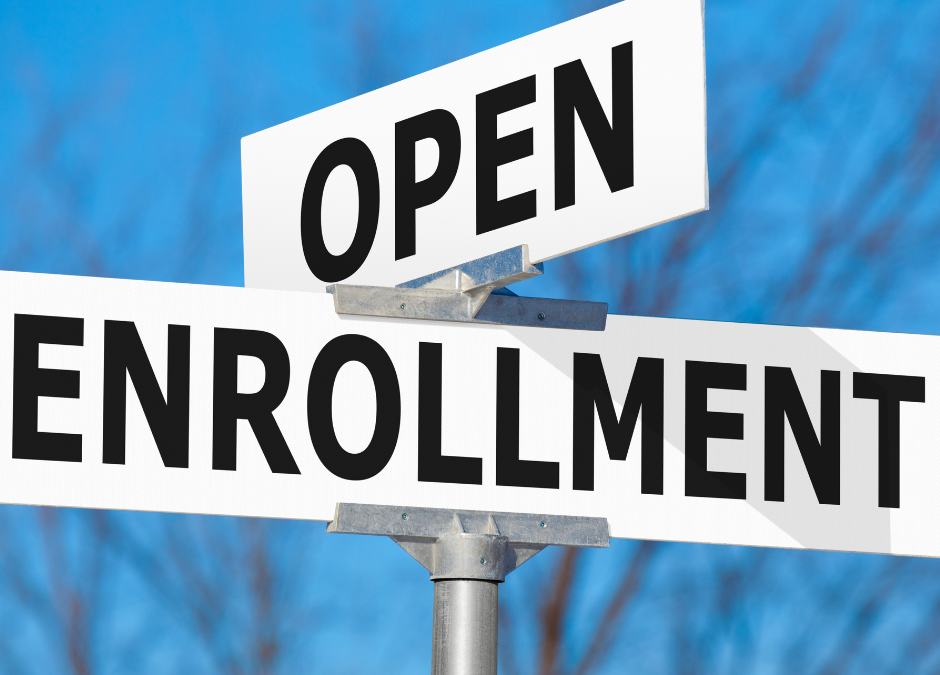
by admin | Sep 21, 2021 | Employee Benefits, Open Enrollment
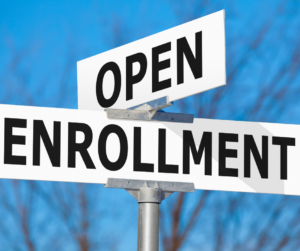 When the autumn leaves fall and the weather turns cooler, we know it’s time to start thinking of open enrollment. Open enrollment season can be a confusing time. As you begin your research into which plan to choose or even how much to contribute to your Health Savings Account (HSA), consider evaluating how you used your health plan last year. Looking backward can help you plan forward to make the most of your health care dollars for the coming year. Here’s what you need to know about your workplace benefits to maximize them:
When the autumn leaves fall and the weather turns cooler, we know it’s time to start thinking of open enrollment. Open enrollment season can be a confusing time. As you begin your research into which plan to choose or even how much to contribute to your Health Savings Account (HSA), consider evaluating how you used your health plan last year. Looking backward can help you plan forward to make the most of your health care dollars for the coming year. Here’s what you need to know about your workplace benefits to maximize them:
1). Know the Open Enrollment Dates
It is up to you to make sure you take advantage of the open enrollment period. Be sure you know when your company has open enrollment because it can be your only time to adjust benefits for the coming year.
2). Evaluate Your Current Benefits
Before open enrollment starts, review the benefits you currently are receiving. Your pay stub can be an excellent resource to find this information; you should be able to find the benefits you are paying for under the deductions or withdrawals section. Standard deductions might include medical insurance, dental insurance, 401(k) contributions, life insurance, vision insurance, long- term disability insurance, health savings account or flexible spending account contributions, and accidental death and dismemberment insurance. Review those deductions to make sure you know what you’re paying for and whether you actually used the benefits.
3). Ask These Questions to Decide What Benefits You Need
Everyone’s situation is different, but most employees should have at least medical, dental and vision insurance and make contributions to a 401(k) or similar workplace retirement savings account.
When evaluating your benefits package, consider what your needs will be or what life changes you can expect for the coming year:
- Do you have a medical condition that requires ongoing care such as diabetes or heart disease?
- Are you trying to get pregnant or are expecting a baby?
- Are you getting married (or divorced)?
- Is your child turning 26 and can no longer be covered under your health insurance?
- Does your significant other have coverage, or will you need to include your partner in your health coverage?
- Are you on track for retirement, or do you need to save more? Don’t forget to take advantage of your company match in your retirement account. This is free money for the future.
All of these are essential questions to ask yourself during the open enrollment season because they can make a difference in what benefits you choose to elect. As you browse the different options, analyze the type of treatment and the amount of treatment you have received in the past. You cannot foresee every expense but focusing on the trends will help you make a sound decision.
4). Compare Out-of-Pocket Cost
Much like health networks, out-of-pocket costs are crucial when choosing the right plan for you and your family. Most health benefits summaries should highlight the amount you will pay in out-of-pocket expenses, including the pocket limit.
Your goal in comparing out-of-pocket costs is to narrow down the plans that pay a higher percentage of your medical expenses and offer higher monthly premiums. These types of plans are suitable for you if:
- You need emergency care frequently
- You are planning to have surgery soon
- You often see a primary care physician
- You have a pre-existing condition or have been diagnosed with a chronic disease like cancer or diabetes
- Your household income is sufficient to cover the monthly premiums
5). Do the Math
People focus on the monthly premium, but you also need to look at the deductible. For instance, if you have a choice between a lower silver plan premium of $345 a month for a plan with a $5,500 deductible, and a higher gold plan premium at $465 a month with a $1,750 deductible, you’re better off with the second plan if you anticipate needing more than $1,500 in medical care. With the second plan, your total annual cost for the premium and deductible comes to $7,330, a $2,310 savings over the lower premium plan.
6). Look at Out-of-Pocket Costs
The deductible is just one out-of-pocket expense; you also have copayments and coinsurance. The three together are your maximum out-of-pocket costs. Under the Affordable Care Act, the maximum out-of-pocket limit is $8,550 for a single person and $17,100 for a family policy.
7). Utilize Tax-Free Benefits
Flexible spending accounts (FSAs), health savings accounts (HSAs), and dependent care spending accounts provide wonderful tax advantages because contributions are made with before-tax income. They can be used to pay for deductibles, prescriptions and health-related costs that are not covered by your insurance (braces, eyeglasses, etc.). At the end of the year, you lose any money left over in your FSA so it’s important to plan carefully and not put more money in your FSA that you think you’ll spend. However, with an HSA, funds roll over from year to year which makes it a great way to save for future medical costs.
8). Review the Provider List
Most health plans today have “in-network” providers. If you see those doctors and visit those hospitals, you pay less out of pocket than if you go outside the network. So, if you want to keep your own doctor and go to a certain hospital, make sure they’re on the provider list.
When it comes to choosing the best workplace benefits plan for you, education is your most significant defense against making substantial financial mistakes, including not taking full advantage of your employer’s benefits. If you have questions about any of the benefits offered, ask your HR department for help or clarification. And remember, looking backward on your past habits and expenses can be an important tool to help you plan forward for next year.
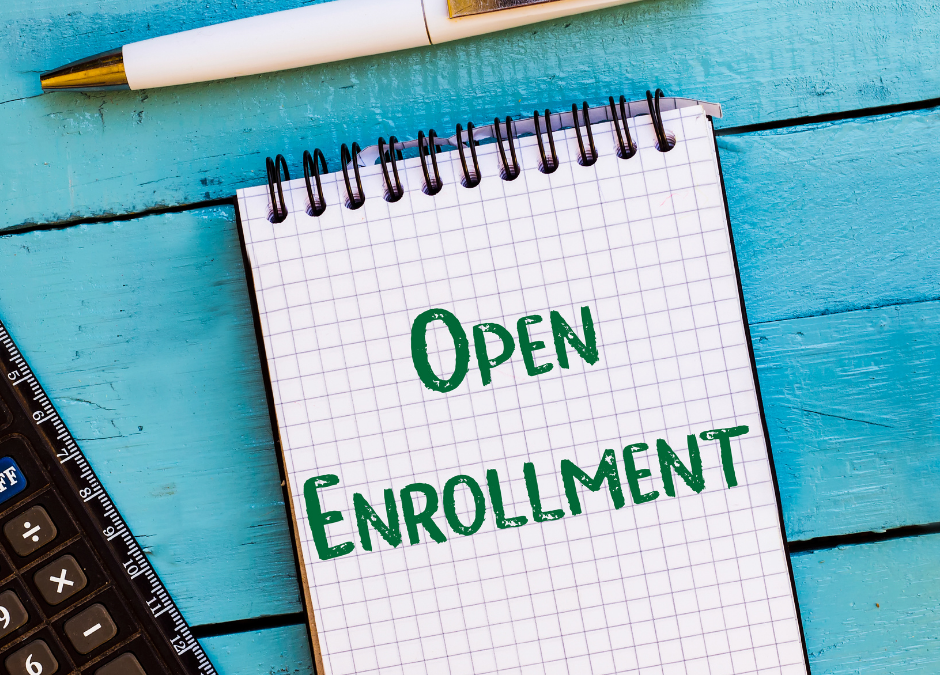
by admin | Aug 10, 2021 | Employee Benefits, Open Enrollment
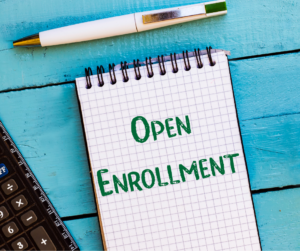 Amid the economic panic last year, workers were unwilling to sacrifice job security for a new work environment. Many workers felt it was foolish to re-enter the job market during a shut down. However, in 2021, employers have experienced high turnover rates and experts are now predicting a “turnover tsunami” in voluntary departures and resignations. Current projections estimate that 3.3 million Americans will leave their jobs by December in search of new ones.
Amid the economic panic last year, workers were unwilling to sacrifice job security for a new work environment. Many workers felt it was foolish to re-enter the job market during a shut down. However, in 2021, employers have experienced high turnover rates and experts are now predicting a “turnover tsunami” in voluntary departures and resignations. Current projections estimate that 3.3 million Americans will leave their jobs by December in search of new ones.
Turnover is expensive: the processes of recruiting, hiring, on-boarding and training cost extensive time but is also a considerable investment. When an employee leaves, the company not only loses a valuable resource but also has to re-distribute duties to other team members in the interim of finding a replacement. The team members who absorb the additional responsibilities reach their own tolerance thresholds.
Employers are always looking for ways to sweeten the attain and retain talented employees. For any job offer, salary will remain a crucial aspect but benefits also play an important role in overall employee compensation. This year more than ever, employers have a unique opportunity to show employees how valued they are and may convince those who are seeking a new job to remain through their benefits. So, what are some of the top benefits employees are looking for right now?
This staple benefit is of the utmost importance to job candidates and typically includes coverage for their families. In fact, 46% of U.S. adults said health insurance was the either the deciding factor or a positive influence in choosing their current job. And 56% said that employer-sponsored health coverage is a key factor in deciding to stay in their current job.
The most common type of retirement benefits is the 401(k) plan. This allows employees to deduct a certain percentage of each paycheck to put towards retirement savings. Some businesses choose to match the employee’s deduction or up to a certain percentage.
Employers can offer short -term disability (STD) or long-term disability (LTD) insurance to their employees. If an insured employee is injured or has a lengthy illness, the benefit pays them during the period of time they are unable to work. STD pays a portion of an employee’s salary if temporarily become sick or are unable to work. LTD payments are paid to employees who have a permanent illness or injury preventing them from performing their duties.
Life insurance and accidental death & dismemberment insurance (AD&D) are important as employees look to the future and want reassurance in protecting their families.
Employers should also consider some perks that have become increasingly sought after. Perks are something that is in addition to the employee’s salary and benefits package that may sway an employee to value one employer over another. Some of the most valued perks in 2021 are:
Wellbeing and mental health provisions have taken on a new significance in the last 12 months. Employers can offer an Employee Assistance Program (EAP) which helps employees to solve problems – whether those relate to finances or other non-work stresses. But employers are also offering more comprehensive mental health services such as counseling or therapy. 48% of employees indicated they had experienced high levels of stress over the last year and are looking for support for stress, burnout, and other mental health issues.
- Flexibility/Remote Work Options
Remote work and flexibility have always been popular among employees but their importance soared in light of the pandemic. Flexibility has been a key factor in providing for employees who have had changes in their life such as caring for a chronically ill loved one or those who suddenly had virtual school for their children. In fact, 76% of workers said they would be more willing to stay with their current employer if they could work flexible hours.
This past year has served as a reminder that employee’s lives don’t just revolve around work. With pets and children crashing our Zoom calls, and other responsibilities – including eldercare and childcare – on many worker’s minds, it’s evident that employees have other responsibilities and priorities that distract us from work. During the pandemic, one in four women considered leaving the workforce or scaled back their work role because of added family caregiving pressures.
Many employees don’t understand the benefits they chose during open enrollment – which means some employees may be looking for a new job for benefits or perks they already have! Now more than ever, it is critical for employers to start communicating early about open enrollment. Getting the word out about open enrollment and available benefits will help employees weigh the advantages of guaranteed perks and benefits with searching for a new job. Giving employees more time to understand their benefits is crucial to employee retention and contentment.

by admin | Oct 26, 2020 | Benefit Management, Human Resources

With many enrollments being forced to go virtual this year, you may feel at a disadvantage. But, there are actually plenty of reasons to believe a virtual open enrollment could be even more effective for you and your clients.
IMPROVED EDUCATION
People only tend to remember 10% of what they hear and only 20% of what they read. However, people actually recall 80% of what they see. As you prepare your virtual enrollment presentations, make sure you work on integrating images to communicate your message. An image has a higher chance of evoking an emotional response in a person than a set of words, written or spoken and with that emotion comes retention. Leverage every opportunity to use graphs, charts, and images to relay your message.
GREATER REACH
As you communicate with your employees regarding education on benefits offerings or deadlines for enrollment, use a form of communication that is natural for most people—text messaging. Texting for employee communication results in a 98% open/read rate and a 45% reply rate. Compare these percentages to basic email open rates of 20% and a reply rate for email of only 6% and you’ll plainly see that texting has a far greater reach. So, if it worries you that virtual enrollments will result in less communication, don’t let it!
Another great way to leverage this time of virtual open enrollments for the good is to get online with your enrollment paperwork by posting it all via an online portal or company intranet. Employees can read through the information at their leisure from anywhere—phone, tablet, or laptop. They can also easily share it with family members who can read it at their convenience. More people will be able to digest the information than if it had only been available at a physical enrollment meeting.
OPEN LINES OF COMMUNICATION
Work on creating a solid foundation of communication for the entire year by introducing it during Q4’s virtual enrollment meetings. Use your company’s social media to stay in contact by posting educational infographics, animated videos on health and wellness topics, and invitations to webinars. Then, by the time 2021’s enrollment period approaches, your employees will be conditioned to look at your social media for company announcements and you will be set up for success as you post info on your different channels.
Even though open enrollment looks starkly different than in years’ past, it does have its benefits. Improved communication, a greater reach, and new, open lines of communication are all byproducts of this innovative, virtual environment. What a great surprise!

by admin | Aug 20, 2020 | Open Enrollment
 Open enrollment season is upon us and many companies are choosing to host “virtual benefits fairs” instead of the traditional “walk and talk” fairs. Open enrollment meetings have turned into live streaming events or recorded webinars. Incentivizing employee participation in these areas can come in a variety of ways but the newest trend is gamification.
Open enrollment season is upon us and many companies are choosing to host “virtual benefits fairs” instead of the traditional “walk and talk” fairs. Open enrollment meetings have turned into live streaming events or recorded webinars. Incentivizing employee participation in these areas can come in a variety of ways but the newest trend is gamification.
Gamification has been defined as “behavior modification using technology.” It involves rewarding employee behaviors that help accomplish a company’s goals and objectives through playing some sort of competitive game. For example, company ABC is having their open enrollment meetings online. They want all employees to watch the overview presentation by the HR department as well as view the enrollment resources. Through gamification, the company creates a series of milestones on a virtual gameboard. Different departments are challenged to work their way through the milestones and the first team successfully completing the game wins. The winning team receives bragging rights and a cash reward. Another option for this same contest is that the individual earns a reward for progressing through the gameboard. This example isn’t tied to a team-driven competition, but instead an incentive for the individual to complete the open enrollment process.
WHY GAMIFICATION WORKS
It’s been reported that 75% of the total global workforce in 2025 will be made up of millennials. That’s three out of every 4 workers who are very engaged online. Gaming in general has a large appeal to this age group so tying it to workplace objectives results in higher participation on the whole. Additionally, the act of accomplishing a task releases dopamine in the brain. This is the neurotransmitter that causes you to feel excited and your brain likes that! In fact, your brain will begin associating euphoria with completing, what one previously thought was “boring”, work. This is called the “reward cycle” and can be achieved through gamification in the workplace.
HOW TO IMPLEMENT GAMIFICATION
Don’t go into this season with the expectation that gamification will solve all your past issues. It won’t. But what it will do is, perhaps, achieve some pretty big behavior changes like increasing the education level of your employees about what benefits they receive with their plan. What it won’t do is make enrollment delays disappear! So, how do you get started? There are great online sources that offer packages to fit your objectives and goals for your company. FinancesOnline has compiled a list of the top five most popular gamification software companies. Beyond that, you can simply make a “wish list” of open enrollment tasks you want your employees to complete and set an award for achieving those milestones—it doesn’t have to be big—make it a tshirt or a department happy hour with a shaved ice truck! Don’t forget to create a simple gameboard either online or in person for everyone to see the challenges and the rewards.
Most Popular Gamification Software
- Tango Card. An all-in-one gamification platform that helps organizations deliver incentives to customers, employees, suppliers, and partners. Our Tango Card review offers a detailed walkthrough of the product’s capability.
- Influitive. A customer-centric gamification solution designed to help businesses reward their loyal customers. This Influitive review offers a comprehensive tour of the product features.
- Badgeville. A reliable gamification software that bundles a customer loyalty program and employee incentive system into a single platform. Our Badgeville review will help you learn all about this powerful solution.
- Hoopla. A powerful incentive platform that leverages live game mechanics to invigorate burnt-out employees working in fast-paced environments like telemarketing and call centers. This Hoopla review details its full capability.
- GetBadges. A reliable gamification software designed to help software development teams incentivize teams during product development stages. This GetBadges review will walk you through the product’s features.
This is the perfect time to start something new for your open enrollment period because the landscape of the traditional office is all something new. People are learning to expect the unexpected so jump on board and offer them a new way of being rewarded for completing enrollment tasks. But, remember, if an employee isn’t already motivated to work towards a goal, gamification isn’t going to make them start. Gamification only amplifies existing motivation.

 For most employers, employee benefits represent a significant portion of their overall budget and a critical part of their employee recruitment and retention strategy. Benefits vary from employer to employer but can range from medical or dental insurance to flexible spending accounts, life and disability insurance, and more. The annual process of renewing those benefits involves a great deal of work, most of which is unseen by employees.
For most employers, employee benefits represent a significant portion of their overall budget and a critical part of their employee recruitment and retention strategy. Benefits vary from employer to employer but can range from medical or dental insurance to flexible spending accounts, life and disability insurance, and more. The annual process of renewing those benefits involves a great deal of work, most of which is unseen by employees.

 When the autumn leaves fall and the weather turns cooler, we know it’s time to start thinking of open enrollment. Open enrollment season can be a confusing time. As you begin your research into which plan to choose or even how much to contribute to your Health Savings Account (HSA), consider evaluating how you used your health plan last year. Looking backward can help you plan forward to make the most of your health care dollars for the coming year. Here’s what you need to know about your workplace benefits to maximize them:
When the autumn leaves fall and the weather turns cooler, we know it’s time to start thinking of open enrollment. Open enrollment season can be a confusing time. As you begin your research into which plan to choose or even how much to contribute to your Health Savings Account (HSA), consider evaluating how you used your health plan last year. Looking backward can help you plan forward to make the most of your health care dollars for the coming year. Here’s what you need to know about your workplace benefits to maximize them:
 Amid the economic panic last year, workers were unwilling to sacrifice job security for a new work environment. Many workers felt it was foolish to re-enter the job market during a shut down. However, in 2021, employers have experienced high turnover rates and experts are now predicting a
Amid the economic panic last year, workers were unwilling to sacrifice job security for a new work environment. Many workers felt it was foolish to re-enter the job market during a shut down. However, in 2021, employers have experienced high turnover rates and experts are now predicting a 
